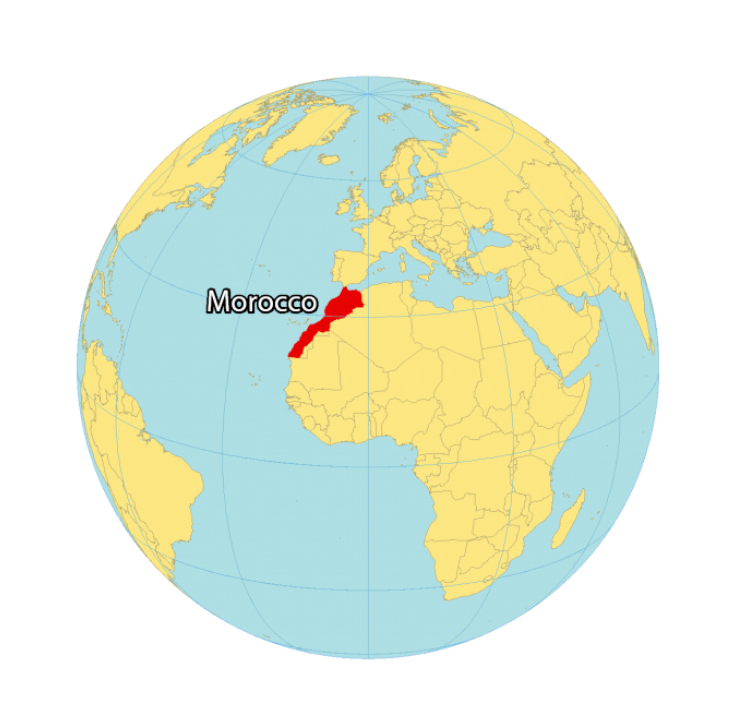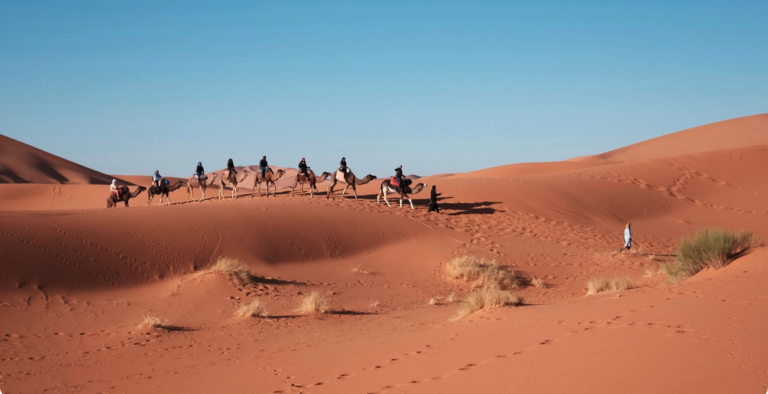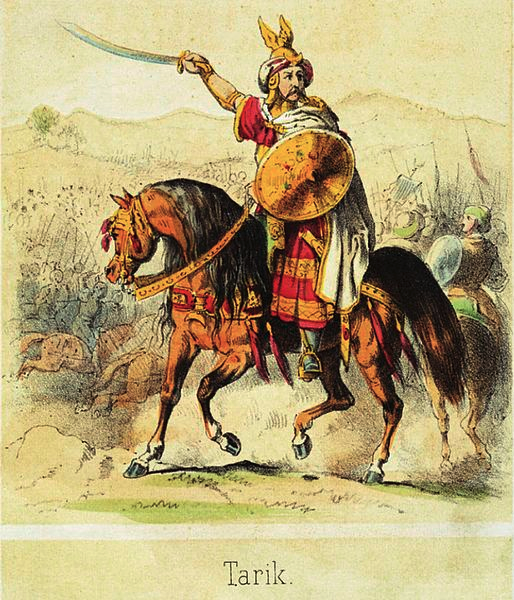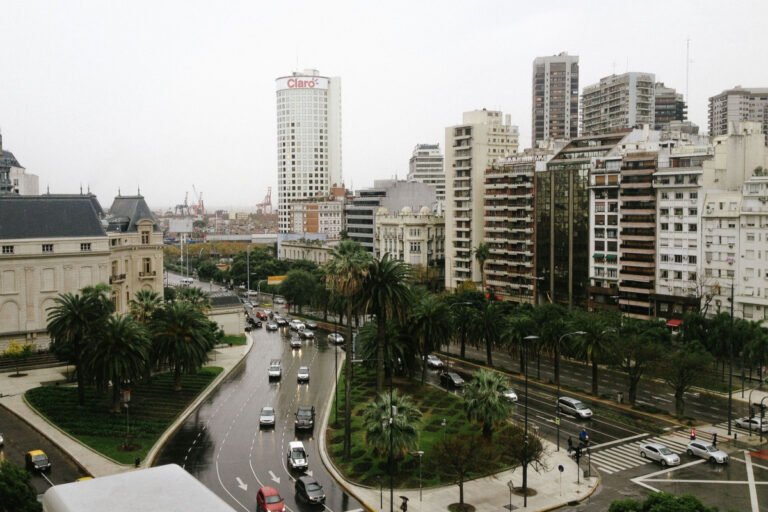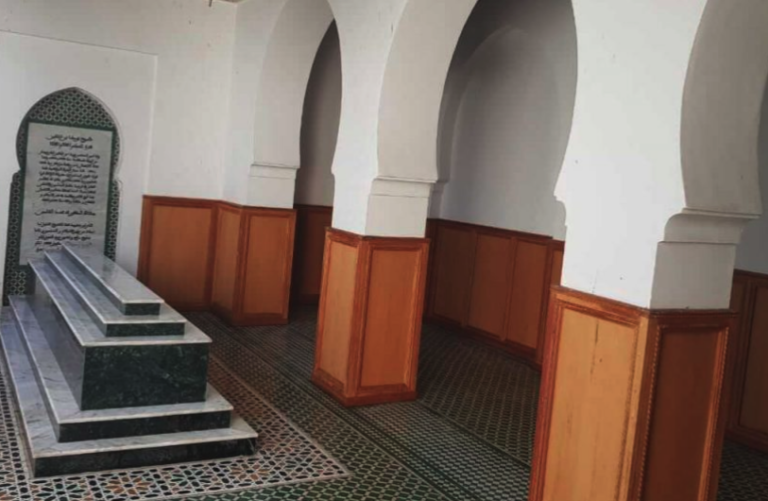From Carthage to Marrakech: Tracing Morocco’s Historical Timeline
Have you ever wondered about the rich and captivating history of Morocco? In this article, we will take you on a journey through time, exploring the ancient origins in Carthage and the influence it had on shaping Morocco’s history.
We will then delve into the medieval city of Marrakech, a political and cultural center that played a significant role in the country’s development. By tracing Morocco’s historical timeline from Carthage to Marrakech, we can uncover the stories and legacies that have shaped this fascinating nation.
Our journey begins with Carthage, an ancient city located in present-day Tunisia but with profound impacts on Moroccan history. Established by Phoenician settlers around 814 BCE, Carthage quickly grew into a powerful empire known for its maritime prowess and trade networks. Its influence extended far beyond its borders, reaching as far as modern-day Spain and Italy. The connections forged by Carthaginians left an indelible mark on North Africa, including what is now known as Morocco.
Moving forward in time, our exploration takes us to Marrakech – a city steeped in medieval charm and significance. Founded in 1062 CE by Almoravid dynasty ruler Yusuf ibn Tashfin, Marrakech became not only a political capital but also a thriving cultural center. Its strategic location at the crossroads of major trade routes facilitated economic growth and cultural exchange between various civilizations across Africa, Europe, and the Middle East. As such, Marrakech witnessed periods of prosperity under different dynasties like Almohads and Saadians who further enhanced its architectural beauty through monumental constructions such as palaces and mosques.
By examining these historical milestones from Carthage to Marrakech chronologically, we can gain valuable insights into how Morocco developed over centuries. Through evidence-based analysis of these key moments in the country’s past, we can appreciate the diverse influences and legacies that have shaped Morocco into the vibrant nation it is today.
So join us on this captivating journey as we trace Morocco’s historical timeline from its ancient origins in Carthage to the medieval city of Marrakech.
Ancient Origins in Carthage
As you wander through the ruins of ancient Carthage, you can’t help but feel transported back in time to a bustling city filled with grand temples and thriving markets. Carthage’s legacy is evident in the numerous archaeological discoveries that have been made over the years, shedding light on its rich history and influence.
The city was founded by Phoenician settlers around 814 BCE and quickly grew into a powerful maritime empire. One of the most significant archaeological finds in Carthage is the Tophet, an area dedicated to religious rituals and sacrifices. Here, thousands of urns containing the remains of infants were discovered, indicating a deeply ingrained religious practice. This discovery provides insight into the spiritual beliefs and customs of ancient Carthaginians.
In addition to religious artifacts, excavations have also unearthed grand palaces, such as the Antonine Baths and Roman villas, showcasing the city’s architectural prowess.
Carthage’s strategic location on the coast made it a major trade hub in the ancient world. Excavations have revealed evidence of extensive trading networks with various civilizations across Europe, Africa, and Asia. The remnants of warehouses filled with goods from distant lands highlight Carthage’s role as a center for commerce. Its wealth and influence extended beyond North Africa into present-day Morocco.
The influence of Carthage on Morocco’s history cannot be understated. As you transition into exploring this aspect further, it becomes clear that Morocco owes much to its ancient predecessor when it comes to cultural exchange, trade routes, and architectural inspiration. From Carthage to Marrakech: tracing Morocco’s historical timeline reveals how these early civilizations laid the foundation for what would become modern-day Morocco.
Influence of Carthage on Morocco’s History
Despite popular belief, the impact of Carthage on Morocco’s history can’t be understated. The Carthaginian conquest of North Africa in the 6th century BCE marked a significant turning point for the region. Through their military prowess and strategic alliances, the Carthaginians established control over various territories in present-day Morocco. This colonization brought about profound changes, including the introduction of new political structures and economic systems that shaped Morocco’s future.
One of the most significant influences of Carthage on Morocco was through trade relations. The Carthaginians were renowned traders and established extensive commercial networks throughout the Mediterranean. They utilized Morocco’s geographical position as a gateway to sub-Saharan Africa, enabling them to control and monopolize valuable trade routes. This not only enriched Carthage but also facilitated cultural exchange between different civilizations inhabiting Morocco at that time.
The commercial success of Carthage’s presence in Morocco led to increased interactions with other ancient civilizations such as Rome and Greece. These connections further enhanced the flow of goods, ideas, and knowledge between regions. Moroccan cities like Lixus and Mogador became important trading centers under Carthaginian rule. The wealth accumulated from these trade networks contributed to urban development, which included infrastructural improvements like roads, harbors, and marketplaces.
As we transition into exploring the medieval city of Marrakech, it’s essential to recognize how Carthage laid the foundation for subsequent historical developments in Morocco. The transformative impact of their conquests and trade relations set in motion a series of events that would shape Morocco’s destiny for centuries to come. From its early origins as a Phoenician colony to its role as a crucial link between European powers seeking access to African resources during colonial times, Morocco owes much of its historical trajectory to this influential period initiated by Carthage.
Next up: ‘Medieval City of Marrakech’
Medieval City of Marrakech
When exploring the medieval city of Marrakech, you’ll be captivated by its stunning architecture.
From the intricate details of the Bahia Palace to the towering minaret of the Koutoubia Mosque, every structure tells a story of skill and beauty.
As you navigate through the bustling markets, known as souks, you’ll immerse yourself in a vibrant atmosphere filled with colorful textiles, aromatic spices, and lively street performers.
The combination of these elements creates an unforgettable experience that showcases the rich history and culture of Marrakech.
Stunning Architecture
Explore the intricate beauty of Morocco’s stunning architecture, immersing yourself in a rich tapestry of history and culture.
The architectural style in Morocco is heavily influenced by Islamic design principles, showcasing intricate details and precise craftsmanship. From the grand mosques to the ornate palaces, every structure tells a story of the country’s past.
In Moroccan architecture, you will find an abundance of geometric patterns, arabesques, and calligraphy adorning buildings. These decorative elements aren’t just for aesthetic purposes but also hold symbolic meanings rooted in Islamic teachings. The use of zellige tiles, for example, showcases the mastery of geometric design and reflects a belief in divine order.
As you explore these architectural wonders, take note of the minarets that rise high into the sky, calling Muslims to prayer five times a day. Marvel at the delicate filigree work on windows and doors that allow light to filter through while maintaining privacy inside.
In addition to its Islamic influence, Moroccan architecture also incorporates elements from other cultures due to its location as a crossroads between Africa and Europe. You may notice hints of Andalusian design with archways and courtyards reminiscent of Spain’s Alhambra palace. This fusion creates a unique blend that sets Moroccan architecture apart from others around the world.
As you delve into Morocco’s stunning architecture, prepare yourself for another sensory delight – bustling markets and vibrant atmosphere that await you in Marrakech.
Bustling Markets and Vibrant Atmosphere
Immerse yourself in the lively energy and kaleidoscope of colors that fill Morocco’s bustling markets, offering a sensory feast for visitors from all walks of life.
These vibrant markets, known as souks, have been an integral part of Moroccan culture for centuries. Here, you can witness traditional craftsmanship at its finest as artisans skillfully create intricate pottery, leather goods, carpets, and textiles. The attention to detail and quality is truly remarkable, reflecting a rich history of craftsmanship passed down through generations.
As you wander through the winding alleys of Marrakech’s famous Medina or explore the labyrinthine streets of Fez’s ancient city center, your senses will be tantalized by the aromatic scents wafting from food stalls. Moroccan cuisine is renowned for its bold flavors and unique blend of spices such as cumin, turmeric, and paprika. Indulge in delicious tagines cooked with tender meats and fragrant vegetables or sample mouthwatering pastries like baklava and msemen.
Transitioning into the subsequent section about Morocco’s political and cultural center, it becomes evident that this vibrant atmosphere has not only shaped the country’s markets but also contributed to its status as a thriving hub where diverse cultures converge.
Political and Cultural Center
At the heart of Morocco’s rich history lies its political and cultural center, a vibrant hub that has shaped the nation’s identity.
As political influence shifted over time, this central location became a melting pot of ideas and power struggles, leaving an indelible mark on the country’s development.
The cultural diversity found within this center further fueled Morocco’s growth, as different traditions and customs intertwined to create a unique national heritage.
One key aspect of Morocco’s political and cultural center was its role as a meeting point for various civilizations.
From ancient Phoenician settlers to Arab conquerors, the city drew in people from far and wide, each bringing their own ideas and beliefs.
This exchange of knowledge led to the emergence of new artistic styles, architectural wonders, and intellectual movements that still resonate today.
The rich tapestry of influences is evident in the city’s diverse architecture, where Roman ruins stand alongside Islamic palaces.
Within this center, Morocco also experienced periods of intense political turmoil.
Dynasties rose and fell as power shifted between local rulers and foreign invaders.
These power struggles shaped not only the city but also the entire nation.
For example, during the Almoravid dynasty in the 11th century, Marrakech became an important stronghold against European incursions into North Africa.
The subsequent reigns saw further consolidation of power within this central location.
Cultural development flourished amidst these turbulent times as well.
Scholars gathered in Marrakech to exchange ideas on religion, philosophy, art, science, and more – leading to groundbreaking advancements in various fields.
Libraries were established to house important manuscripts from across North Africa and beyond.
This intellectual environment attracted thinkers from all corners of the Muslim world and beyond.
Morocco’s political and cultural center played a crucial role in shaping the nation’s history through its strong political influence and vibrant cultural development.
It served as a meeting point for civilizations throughout centuries while experiencing its own share of power struggles.
The city became a hub of intellectual exchange, fostering advancements in various fields.
As we delve further into the stories and legacies that shaped Morocco, it becomes clear that this central location remains an emblematic representation of the nation’s rich history and cultural heritage.
Stories and Legacies that Shaped Morocco
Step into the captivating narratives and enduring legacies that have shaped Morocco, transporting yourself to a world where ancient civilizations collide and vibrant traditions intertwine.
One of the key factors that have influenced the course of Moroccan history is its influential rulers. From the powerful Berber dynasties to the mighty Almoravids and Merinids, these leaders left their indelible mark on the country’s political and cultural landscape.
One such influential ruler was King Mohammed V, who played a pivotal role in Morocco’s fight for independence from French colonial rule. His unwavering determination and commitment to his people earned him immense respect and admiration both within Morocco and internationally. His legacy as a unifying figure can still be felt today, as he laid the foundation for modern-day Morocco.
Another important aspect of Morocco’s historical timeline is its cultural diversity. Over centuries, various groups including Berbers, Arabs, Jews, and Europeans have all contributed to shaping Moroccan identity. This rich tapestry of cultures has resulted in a unique blend of traditions, languages, architecture, music, and cuisine that define modern-day Morocco. The influence of these diverse cultures can be seen in every corner of the country – from the intricate designs adorning mosques to the bustling souks filled with aromas from different spices.
The story of Morocco’s past is not just confined to its rulers or cultural diversity; it also includes tales of resilience in times of adversity. From surviving invasions by foreign powers to weathering periods of political instability, Moroccans have displayed remarkable strength throughout history. These stories serve as a reminder that despite challenges faced along the way, Morocco has managed to maintain its distinct identity while embracing new ideas and influences.
Step into this fascinating journey through time and discover how influential rulers have shaped Morocco’s destiny. Explore the diverse cultural heritage that permeates every aspect of Moroccan life today – from its mesmerizing architecture to its colorful festivals. Experience firsthand how stories of resilience and endurance have molded the country into what it is today. Morocco’s historical timeline is a testament to the power of human ingenuity, cultural exchange, and the enduring spirit of its people.
Frequently Asked Questions
How did Carthage become a powerful city in ancient times?
Carthage became a powerful city in ancient times through a combination of influences on Carthaginian architecture and the significant role of trade. This allowed them to establish strong political, economic, and military power in the region.
What were the major achievements of Carthage during its existence?
Carthage’s contributions were significant and impactful. They excelled in trade, establishing a vast commercial network across the Mediterranean. Their military prowess resulted in territorial expansion and control over North Africa, Sicily, Sardinia, and parts of Spain.
How did the influence of Carthage on Morocco’s history shape the country’s culture and traditions?
The influence of Carthage on Morocco’s history has shaped the country’s culture and traditions in unimaginable ways. From language to architecture, art to cuisine, Carthaginian legacy can be seen throughout Moroccan society, making it truly unique.
What were the key factors that led to the rise of Marrakech as a medieval city?
To understand the rise of Marrakech as a medieval city, key factors include its strategic location on trade routes, the Almoravid dynasty’s conquest and establishment of the city, and the construction of iconic landmarks like the Koutoubia Mosque.
What were some of the significant political and cultural changes that occurred in Marrakech throughout history?
Throughout history, Marrakech experienced significant political and cultural changes. Politically, it transformed from a Berber city-state to an imperial capital under Almoravids and Almohads. Culturally, it became a center of Islamic learning and art.
Conclusion
In conclusion, tracing Morocco’s historical timeline takes you on a captivating journey from the ancient origins in Carthage to the medieval city of Marrakech.
The influence of Carthage on Morocco’s history is evident in the cultural and political developments that shaped the country over centuries. The remnants of this great civilization can still be seen today, serving as a testament to its enduring legacy.
Moving forward in time, we arrive at Marrakech, a city that served as both a political and cultural center throughout history. This vibrant hub witnessed the rise and fall of numerous dynasties and experienced periods of prosperity and decline. Its stunning architecture, bustling souks, and rich traditions continue to captivate visitors from around the world.
As you traverse through Morocco’s timeline, stories unfold before your eyes, each leaving an indelible mark on the country’s identity. From the ancient ruins of Carthage to the majestic palaces of Marrakech, every step reveals another layer of Morocco’s complex past.
Like an artist carefully crafting their masterpiece stroke by stroke, these historical events come together to create a vivid tapestry that tells the story of this fascinating nation.
In exploring Morocco’s history chronologically from Carthage to Marrakech, it becomes clear how various civilizations have left their imprint on this land. By examining archaeological evidence and studying historical accounts, one can gain insights into how these influences shaped Morocco into what it is today.
So take a moment to immerse yourself in this captivating journey through time – let yourself be transported back to ancient ruins and grand palaces as you witness firsthand how history has unfolded in this remarkable country.

The Editorial Team is a passionate group of Morocco enthusiasts dedicated to sharing the beauty, culture, and wonders of this captivating country. With diverse backgrounds and a deep love for travel, we strive to bring you engaging and informative content that inspires your Moroccan adventures. From uncovering hidden gems and sharing local insights to exploring mouthwatering cuisine and showcasing the vibrant lifestyle, our team is committed to providing you with valuable resources and exciting stories that enhance your exploration of Morocco. Join us on this journey as we celebrate the rich heritage and unforgettable experiences that make Morocco truly special.

